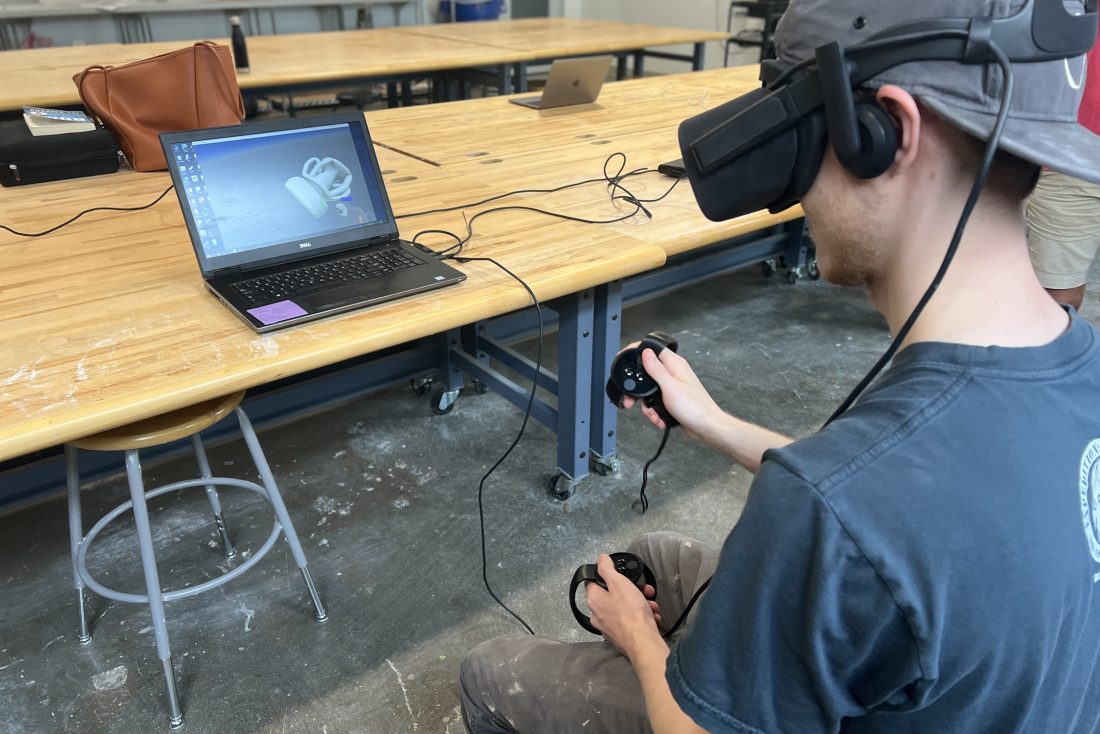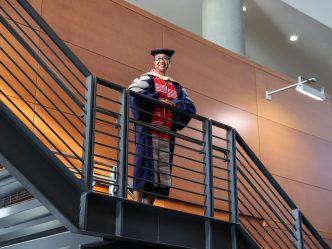Virtual reality is quickly becoming an actual reality in all facets of technology, education, entertainment and the workplace.
It’s a popular topic, and Augusta University’s Lynsey Steinberg from the Center for Instructional Innovation sat down to answer a few questions about how far VR has come — and where it’s going.
VR is changing everyday life for many. What are the biggest advances you’ve seen in VR use?
Virtual reality is rapidly evolving and expanding. It wasn’t too long ago we were excited for the idea of a wireless headset. Now there are companies such as Virtuix creating 360-degree treadmills to interact with your experience in VR and Hypnos VR — a product which releases scents in the air based on the experience in VR.
There have been advances of adaptive and stress response simulations based on pupillometry measurements or even integration of physiological sensors for behavioral research. The biggest advancements are solutions that have been unimaginable before that are now entirely possible.
It seems the medical field has been a big benefactor of VR. Is this giving students a better way to learn about anatomy and other aspects of the field?
I believe all experience is valuable to learning. VR is unique in allowing an individual to view as if from their own perspective for virtual experiential learning. We often hear the phrase, ‘If you could imagine walking a mile in someone else’s shoes,’ and now we can provide perspective, allowing another person to view the world as someone with a particular disease or simulate training in a low-risk environment.
One example, Fire in the OR, is a VR simulation that allows medical professionals to train safely on how to remove fire danger in the operating room. I believe simulations like these are remarkable examples of how valuable VR can be in education, to remove elements of danger in everyday life. Their research showed 250% improvement rate on fire safety in the OR.
A huge industry leader in surgical simulations is Osso VR, creating surgical training procedures for surgeons and hiring some of our Augusta University medical illustration graduates.
How is this being applied at Augusta University?
The Center for Instructional Innovation created modules with the Medical College of Georgia on handwashing hygiene health and end-of-life care scenarios with the College of Nursing.
We encourage faculty to develop multiple methods of interactive modules for the benefit of all learning styles. VR certainly provides engaging and enriching materials for a low-risk environment in instruction. The Center for Instructional Innovation is currently working with the Academic Success Center to implement Oculus Quest headsets for anatomy and physiology students to benefit from application use in VR.
How else has VR and its use changed the way we go about our daily lives?
VR headsets are known in robotics, manufacturing, therapeutic modalities, gaming capabilities, technology, research and education. Any scene you can film in 360 degrees you can now watch in a headset and be fully immersed in the scene — for example a theater production, a museum tour, an art exhibit, a temple historically preserved. We have gone from telling a story to being immersed in a story.
We have been able to utilize VR technology integration and innovation on campus to create enriching learning experiences. We collaborated with ceramics, including Brian McGrath and Raoul Pachecho, to support students in virtual clay sculpting with Adobe Medium. Students 3D printed their works of art after exporting the files from the VR simulation.
Where do you see the future of VR?
The future developments for integrating systems for haptic feedback will be remarkable integrations. The continued development of behavioral research and integration of gamification is an exciting opportunity in VR as well as the continued development for protocols and appropriate safety procedures. The cross-platform and cross-disciplinary possibilities will allow for creativity to blossom in new-world solutions. It is clear that the ongoing need for a technical workforce that can create and support VR and other high-impact technology is rapidly growing.
Steinberg is one of 300 board-certified medical illustrators. She uses developments in virtual reality, 3D printing, animation, gamification and graphic design to support innovation among students, faculty and physicians.
 Augusta University
Augusta University




